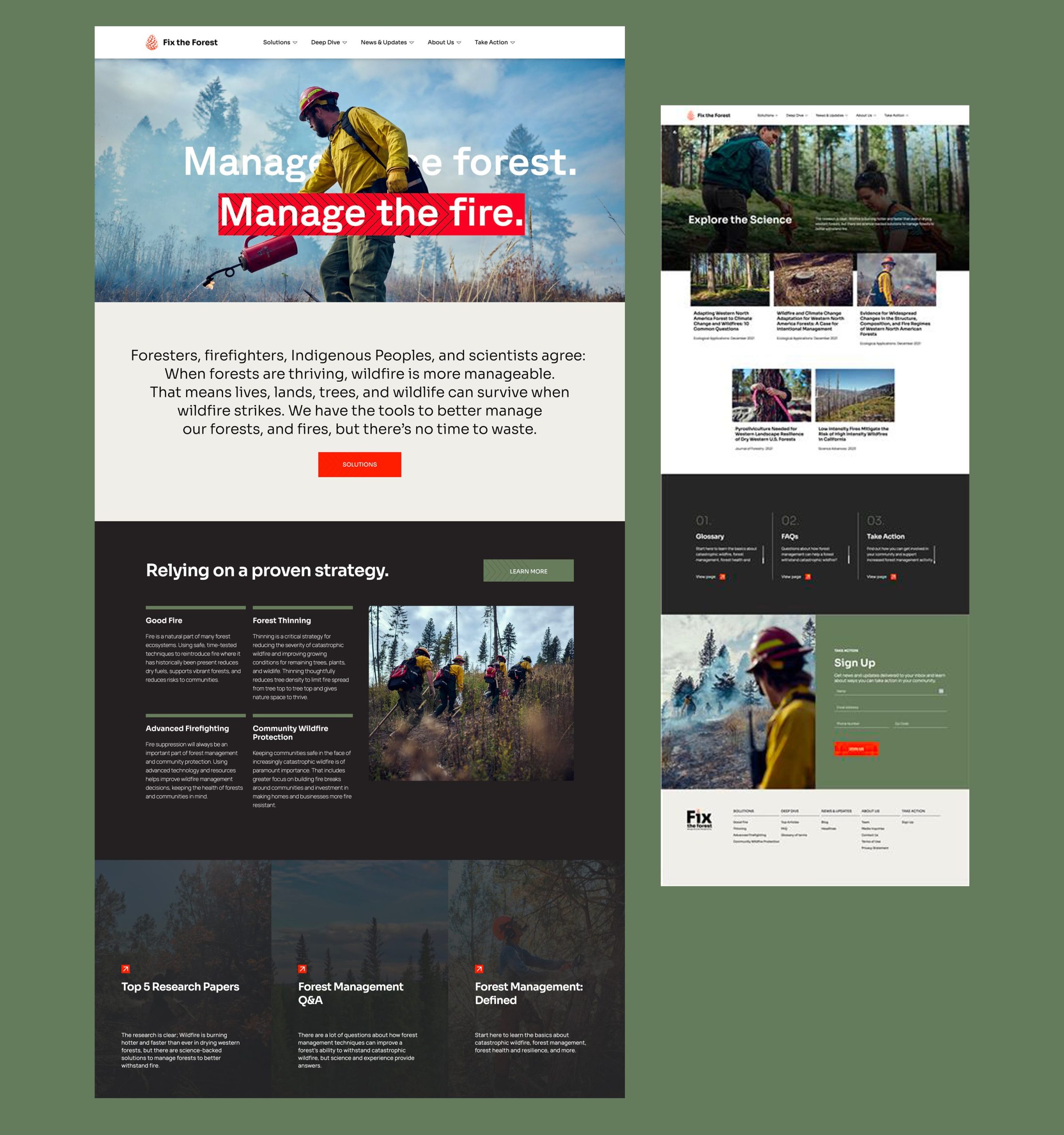Fix the Forest

America’s forests are sick. Hotter and drier conditions combined with decades of fire suppression have left these critical landscapes ill prepared to adapt to our continually warming climate and prone to high intensity fires that put our communities at risk. To restore forests to greater health and make them more resilient to fire, we must increase the pace and scale of forest management activities, across all ownerships, using science-backed methods, including prescribed fire.
THE CHALLENGE
The Environmental Defense Fund came to S360 as they had just launched a new climate resilient forest initiative aimed at influencing how newly available federal funds are spent. Specifically, the resilient forest initiative hoped to build support for increasing the pace and scale of forest management, utilizing science-backed practices to improve forest health and make our forests more resilient to catastrophic wildfire.
Our overarching goal was to grow public literacy about forest management practices and utilize public support to influence key decision makers to support these solutions on the ground and in the policy arena. Our biggest challenge was to counter the confusion around why catastrophic fires are on the rise and invite people in on being a part of a collaborative solution.
S360 KNOW HOW
With a history of working with both the forest industry and environmental organizations S360 was the perfect match to develop an objective and collaborative solution to communicate to a very divided public.
OUR APPROACH
We started with a detailed look at our audiences, identifying what target audience was our most critical in moving the conversation along and what their communications hurdles were that needed to be addressed. At the same time we compiled a comparative audit to better understand the language and arguments with weight behind them, this included other organizations as well as search engines and an earned media review. This all led to a campaign strategy that outlined our critical target, objective, key hurdles and priority proof points to support our strategy.
Next, campaign concepts were developed based and focus groups were gathered. Through these groups we were able to test not just language, but tone. Considering the sensitivity around fire management it was critical to see how far we needed to push our audience to capture their attention without becoming contentious.
While our campaign concept was being refined we developed a site that presented forest management in an straightforward, unbiased presentation. Our goal was to clearly present forest management as a collaborative, all hands on deck effort – giving viewers both a clear overview of the required partnerships and detailed science involved in healthier forests. The site aims to appear non-partisan and inviting to all, with the aim to grow public literacy about forest management practices and utilize public support to influence key decision makers to support these solutions on the ground and in the policy arena.
We then traveled to 3 distinct forests (Idaho, Northern California, New Mexico) and captured forest management in action – from prescribed burns to salvage logging to research stations. We visited devastated forests and communities and captured the stories of the burn from forester and neighbor.
WHAT WE DID
Our campaign landed on “Fix the Forest” and centered around a cone – which represents resilience as well as fragility. The positive message of “Fix the Forest” allowed our target to be a part of the solution, or be curious as to how to affect change. The site, photos, and disciplined strategy all worked towards a concise program EDF is able to take on the road whether meeting with an impacted community, politician from a small rural forest community, or speaking at a climate change conference.

WHY IT WORKED
Through thorough research, strategy development and focus groups our approach threaded the needle between historically contentious groups. The campaign is now in full swing in supporting the efforts of the team to increase the pace and scale of forest management activities as every fire season becomes more and more precarious.